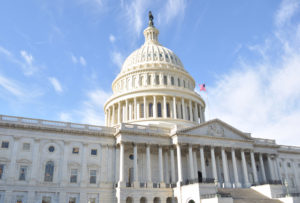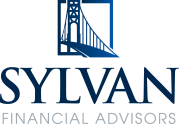 SECURE Act 2.0 continues to evolve as it is being reviewed in the Senate. Here’s what you need to know.
SECURE Act 2.0 continues to evolve as it is being reviewed in the Senate. Here’s what you need to know.
The bill known as “SECURE Act 2.0,” which is the follow-up to the Setting Every Community Up for Retirement Enhancement (SECURE) Act which was signed into law in 2019, is now taking shape in the Senate. The bill passed in the House of Representatives in March.
Below are some of the basic provisions of the legislation which may affect your retirement plan. Remember, these are still under review and may be altered in the Senate. With broad bipartisan support, some final form of SECURE Act 2.0 is expected to pass in 2022.
- Raising the Age for RMDs
The original SECURE Act raised the age for required minimum distributions (RMDs) from 70-1/2 to 72. This new bill is expected to raise the age to 75. Being debated is whether the age increase will take effect immediately in a designated future year, or be raised gradually over the next 10 years.
Remember, RMDs are mandated by the IRS. You must withdraw a certain percentage of your money held in taxable retirement accounts like 401(k)s and traditional IRAs—and pay the ordinary income tax rate on the amounts withdrawn every single year—whether you need the income or not.
Be sure to work with your financial professional starting at least five years prior to retirement to see if you can find a tax-efficient way to handle withdrawals by using a series of Roth conversions or other potential tax planning strategies before you retire.
- Reducing the RMD Tax Penalty
Currently, the tax penalty if you fail to handle RMDs correctly—like withdrawing the incorrect amount, withdrawing from the wrong accounts, or failing to withdraw by midnight on December 31st in the year due—is a whopping 50% on top of the tax due. SECURE Act 2.0 may lower that penalty to 25%.
- Allowing Employers to Offer a Matching Amount for Student Loan Payments
Although the IRS has already issued a ruling allowing an employer to match employees’ payments to student loan debt as an alternative to matching their 401(k) contributions, the statutory law has never been formalized. SECURE Act 2.0 may do just that.
- Upping Catch-Up Contributions for Older Workers
Right now, the annual limit for contributions to a 401(k) plan for 2022 is $20,500, plus an additional “catch-up” contribution amount of $6,500 (indexed for inflation) for people age 50 or older. The SECURE Act 2.0 may up the ante for those ages 60+.
The House version of the bill will allow an annual catch-up amount of $10,000 indexed for inflation (up from $6,500) for people age 62, 63 and 64, beginning in 2024.
The Senate’s version of the bill also allows an annual catch-up amount of $10,000, except that it would become effective starting December 31, 2021—so the 2022 tax year would be included—and would not end at age 65.
- Roth-ifying Catch-Ups
For both the House and Senate versions so far, all catch-up contributions starting in 2023 will be required to be placed in Roth accounts—meaning the contributions will be taxable in the year they are made. The good news about Roth accounts is that you can take your money out tax-free later if you follow all rules, Roth accounts are not subject to RMDs, and you can leave Roth accounts to your heir/s tax-free—they just have to empty and close the Roth account within 10 years of inheritance.
- Roth-ifying Company Matching Amounts
Currently, any employer retirement plan matching contribution amount is made on a pre-tax basis even if an employee has elected to contribute to an after-tax Roth 401(k). Depending on the final version of SECURE Act 2.0, employer plan sponsors may have the option of permitting employees to elect that some or all of their matching contributions be treated as Roth contributions for 401(k) plans.
Employer matching contributions designated as Roth contributions would not be excludable from employees’ gross income—in other words, the employer matching amount would be subject to income tax in the tax year it is received.
- Staying In a Workplace Plan If You Leave a Job
If you leave your job, employer-sponsored plans like 401(k)s currently can transfer your balance out of their plan into an IRA (Individual Retirement Account) for you if you have a low amount—usually from $1,000 – $5,000—in your account. SECURE Act 2.0 may increase the limit from $5,000 – $7,000 before an employer can transfer it.
If you have left a job, consider talking with a financial professional to see if a rollover into your new company’s 401(k), a rollover into your own personal IRA, leaving your 401(k) in place with your prior company, or another strategy altogether might work best for you based on your personal situation.
- Auto-Enrollment in Retirement Plans
Though the Senate may only offer employers incentives for this provision rather than mandate it, the House version of SECURE Act 2.0 includes automatic enrollment into a new job’s 401(k) or 403(b) plan at a rate of 3% of your pay, gradually increasing by 1% per year until you reach 10% of your pay being contributed. An employee can still opt out of doing this, and companies with 10 employees or less, those which have been in business less than three years, churches, and governments are exempted from the requirement.
NOTE: The reasoning behind the provision for auto-enrollment is that it would increase participation and assist retirement. That logic is well-founded. The Thrift Savings Plan (TSP), which is essentially the equivalent to a 401(k) plan for federal employees, automatically enrolls government workers and has a participation rate of 93.5%. By contrast, in 2021 private employer-sponsored plans had a participation rate of only 75% for eligible workers.
- Among other key changes, SECURE Act 2.0 may also:
- Allow part-time workers to qualify for workplace retirement plans earlier.
- Eliminate some of the barriers to offering lifetime income annuities to retirement plan investment options.
- Extend some of the design features of 401(k) plans to 403(b) retirement plans.
- Create a national database for Americans to find lost retirement accounts.
- Expand self-correction opportunities for participant loan errors and elective deferral failures.
- Require the Treasury Secretary to take steps to increase public awareness of the “Saver’s” tax credit available to low- and moderate-income workers.
With strong support from both political parties, SECURE Act 2.0 is expected to pass this year. It may continue to evolve as it slowly works its way through the Senate, but with trouble brewing regarding the solvency of Social Security, legislation geared toward boosting retirement is seen as a positive by many.
If you have any questions about how SECURE Act 2.0 may affect your retirement, please give Sylvan Financial Advisors a call at (201) 282-5332.
Sources:
https://www.investopedia.com/secure-2-0-definition-5225115
https://finance.yahoo.com/news/secure-act-2-0-passes-113003138.html
Keep in mind, this article is for informational purposes only and not to be construed as financial or investing advice, nor is it a replacement for real-life advice based on your unique situation. Investing and retirement account rules are constantly changing, and it is recommended that you work with your financial professional to assess and invest based on your unique situation.
All securities offered through The Investment Center, Inc. Bedminster, NJ- Member FINRA/SIPC. Advisory Services provided through IC Advisory Services, Inc.-An SEC Registered Investment Advisor. Sylvan Financial Advisors is not affiliated with The Investment Center, Inc. or IC Advisory Services, Inc.


